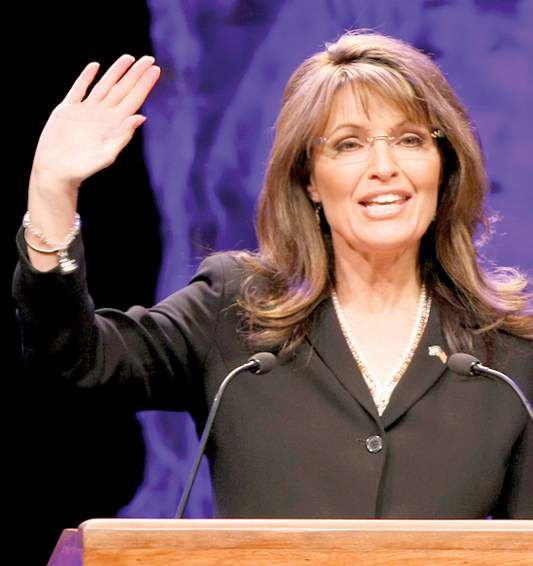Tea Party looks to move from the fringe
Published 4:00 am Sunday, February 7, 2010

- Former vice presidential candidate Sarah Palin addressed the inaugural Tea Party convention on Saturday, calling the deficit “immoral” and “generational theft.”
NASHVILLE, Tenn. — There were the handful of Revolutionary War re-enactors with their powdered wigs and tri-corner hats. And the guy with the T-shirt proclaiming himself a proud member of the “Tennessee MOB” — a poke at politicians who dismissed Tea Partiers as an “angry mob.” And one speaker did insist that Jesus’ birth was better documented than President Barack Obama’s.
But at the inaugural National Tea Party Convention here this weekend, gone were the placards protesters had carried last year with Obama’s face wearing a Hitler mustache, or superimposed on the Joker of Batman fame. Gone, really, were any placards, unless you count the poster of Sarah Palin in her signature red jacket that someone had hung from one of the wrought iron balconies of the Opryland Hotel and Convention Center.
Organizers said anyone who had shown up “looking too crazy” would have been tossed out. They had a goal that it turned out pretty much everyone here shared: to turn the Tea Party into a serious political force, rather than the anger-filled fringe group they say they’ve been branded as.
“The movement is maturing,” said Judson Phillips, the founder of Tea Party Nation, the social networking site that sponsored the convention. “The rallies were good for last year, because that’s what we could do last year. This year, we have to change things. We have got to win.”
The goal is electing a conservative Congress in 2010 and a conservative president in 2012. To that end, organizers announced the formation of a political action committee they say could steer $10 million to conservative challengers this year.
And the convention tried to channel anger into what Phillips called “Electioneering 101.” “What we want people to do is to leave here connected with other activists, so they can recruit good candidates, get candidates exposed to the voters, and get voters to the polls,” he said. “If we just go out and hold signs and protest, that’s not going to win the election.”
Divisions
Despite the convention and its neat PowerPoint presentations, the movement that began a year ago to protest government bailouts and health care legislation showed signs this weekend that it is still undeveloped, diverse and almost defiantly leaderless.
“This movement doesn’t need a leader,” said Anthony Shreeve of the Tennessee Tea Party Coalition, which did not take part this weekend but staged a counter news conference outside. “It’s a ‘We the People’ movement.”
Tea Party Nation said it had invited the chairmen of the Republican and Democratic national committees to speak with delegates in town hall-style sessions. (Tea Partiers argue that Republicans are just as complicit as Democrats in the expansion of big government, so perhaps neither would have felt welcome.)
But organizers said they never heard back from the Democratic National Committee, and while the Republican chairman, Michael Steele, expressed interest, he later declined, citing “scheduling issues,” which Phillips called “really regrettable.”
“Are they scared of you?” asked a reporter from French radio, one of several foreign journalists covering the convention.
“They should be,” Phillips said.
Among those represented here were some old conservative players, like Young Americans for Freedom and Judicial Watch. But the convention was bleeding sponsors and participants right up to its opening day because of accusations from other Tea Party groups that Tea Party Nation, which is unapologetically for-profit, was profiteering. Tea Party Patriots, another social networking site with ties to FreedomWorks, the Washington advocacy powerhouse led by former Republican House leader Dick Armey, suggested to its members that the ticket price was too high: $549, or $349 to see only Palin, the keynote speaker Saturday night.
Phillips refused to say how much Palin was being paid, saying she had made them sign a confidentiality agreement. Reports were that her fee was $100,000.
In the end, he said, the convention would just break even: “I keep telling people my profit’s going to be in the high two figures.”
Like no other party convention
Apart from a guy wearing the shirt fashioned from an American flag, this did not have the confetti and balloon-drop feel of the typical party convention. There were no fiery speeches. The 600 people who had come from as far as Hawaii sat in neat rows in banquet rooms, listening to panel discussions about how to grow the movement and raising their hands politely to speak.
“This is a real working convention; there was nothing around (like) tea bags and signs,” said Mark Skoda, the leader of the Tea Party in Memphis.
Many of the sessions emphasized the importance of new technologies. If Tea Party advocates offer little admiration for Obama, they do often cite his campaign as a model for how it built a fortune from small donations and used social networking.
But the crowd here was largely middle-aged and upward, and technology may not come as easily as it did to the youths, by comparison, who powered Obama’s campaign. A session on “collaboration in the cloud-applied technology” got hung up on basics like how to do an effective Google search, buy a Web domain or send mass e-mail.
Still, what delegates may lack in political savvy, they make up for in energy.
At a panel discussion titled “Defeating Liberalism via the Primary Process,” the room erupted in a standing ovation when Barbee Kinnison, a delegate from Nevada, stood up and declared her intention to unite Tea Party groups behind a candidate to defeat Sen. Harry Reid of Nevada, the Democratic leader.
As the session ended a few moments later, people charged toward her to exchange cell phone numbers and pledges of support. “You need to come to California and help us defeat Nancy Pelosi,” one woman said.






